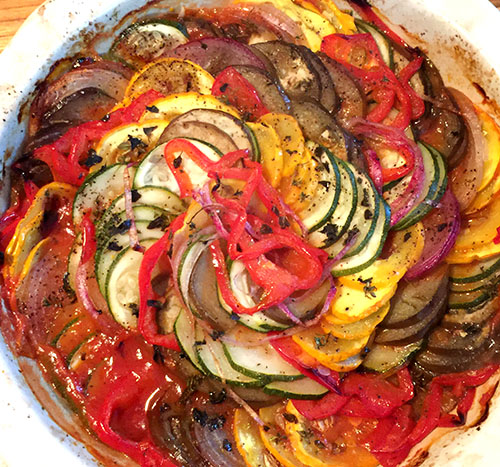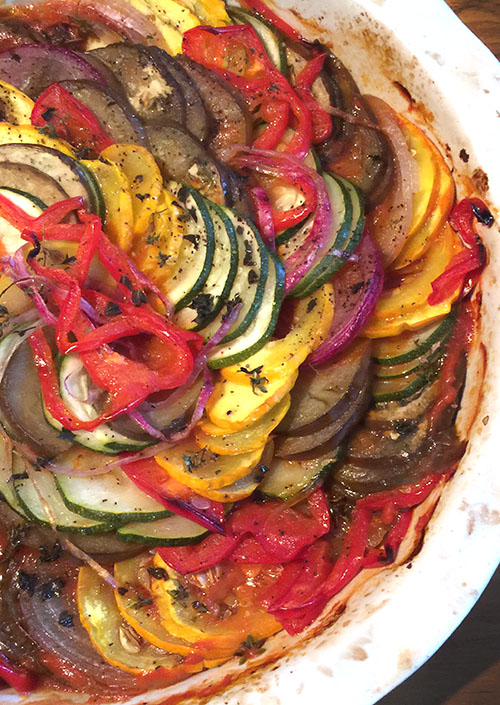 [I]f you’ve never seen the movie “Ratatouille,†you should. And if you’ve never made the vegetable dish that, in part, inspired the film’s name, you should go there, too. Both exemplify the best of what I love about art, cooking and creativity and the hope inspired in one’s passions.
[I]f you’ve never seen the movie “Ratatouille,†you should. And if you’ve never made the vegetable dish that, in part, inspired the film’s name, you should go there, too. Both exemplify the best of what I love about art, cooking and creativity and the hope inspired in one’s passions.
Both are “simpleâ€:
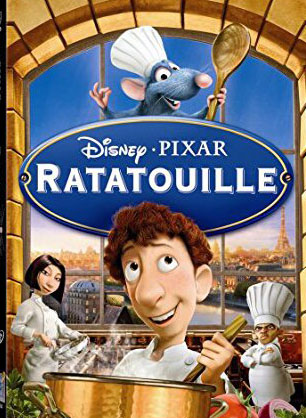 [R]eleased in 2007 by Disney Pixar and directed by Brad Bird, “Ratatouille,†the movie, is another seemingly simple animated film telling a basic story through adorable animated heroes — in this case a sensitive, clever and artful rat named Remy, who lives in France and has somehow been imbued with loftier standards — when it comes to cuisine — than his rodent brethren. On the run from a gun-toting granny hell-bent on ridding herself of “pests,†Remy and his kin must escape. Remy ends up in Paris in the restaurant of his gastronomic guru, Gusteau, who has recently passed away. When rat meets restaurant, more hijinks ensue. As the movie unfolds, it becomes clear that more meaning and more flavor come through than in a mere children’s cartoon, somewhat like the seemingly simple layers in ratatouille, the dish, made up of thinly sliced eggplant, zucchini, squash and onion atop a garlicky tomato-sauce base and steamed underneath a layer of parchment, with a heavenly sensory end result.
[R]eleased in 2007 by Disney Pixar and directed by Brad Bird, “Ratatouille,†the movie, is another seemingly simple animated film telling a basic story through adorable animated heroes — in this case a sensitive, clever and artful rat named Remy, who lives in France and has somehow been imbued with loftier standards — when it comes to cuisine — than his rodent brethren. On the run from a gun-toting granny hell-bent on ridding herself of “pests,†Remy and his kin must escape. Remy ends up in Paris in the restaurant of his gastronomic guru, Gusteau, who has recently passed away. When rat meets restaurant, more hijinks ensue. As the movie unfolds, it becomes clear that more meaning and more flavor come through than in a mere children’s cartoon, somewhat like the seemingly simple layers in ratatouille, the dish, made up of thinly sliced eggplant, zucchini, squash and onion atop a garlicky tomato-sauce base and steamed underneath a layer of parchment, with a heavenly sensory end result.
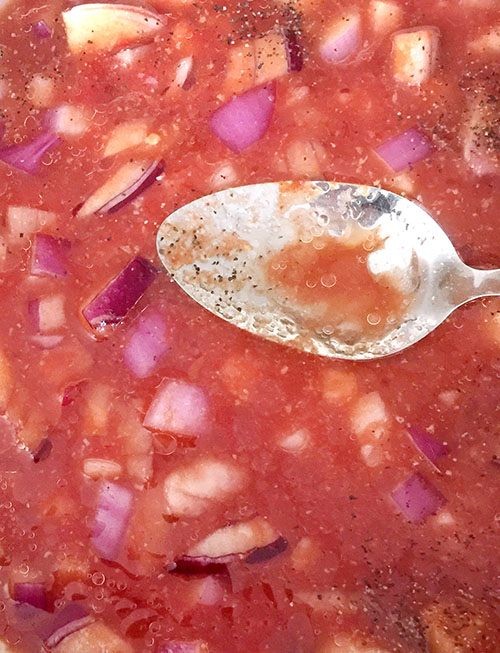
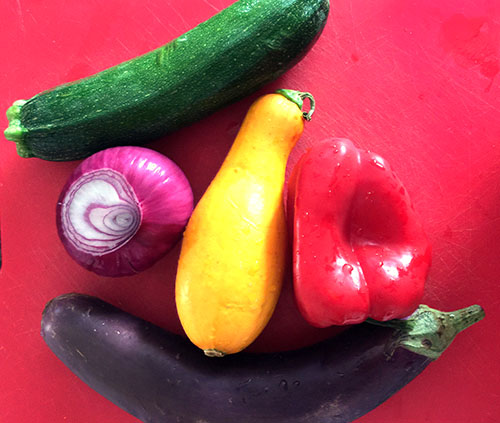
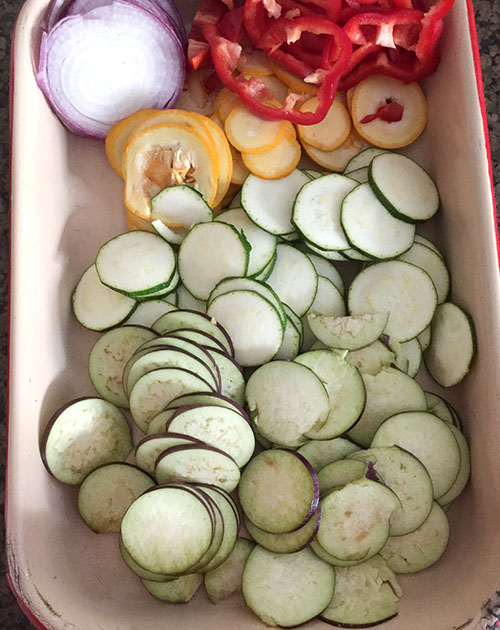
Both are artful, colorful and creative:
[I] don’t think I’ve ever seen an animated movie as visually satisfying as “Ratatouille.†And as far as cooking movies goes, it ranks high. From what I’ve read, great pains were taken to research and replicate the interior of a restaurant kitchen, the rich details, from the setting to the cast of characters in the kitchen, chopping, sautéing, kneading and serving, to the enterprising “behind the walls†survival world of the rats, unwelcome not only especially in the kitchen, but in man’s midst in general. Food is the celebratory core of this film, and it is as beautifully presented and inspiring, if not more, than any cooking show…enough to send one almost as seemingly out of place in the kitchen as poor Remy (who meets himself as full, budding chef as he gleefully rescues the soup in this clip, to dreaming of picking up an apron and a chef’s knife and get cracking. Ratatouille, the dish, is also an alluring feast of color and creativity. One takes a pile of sliced vegetables of similar size and arranges them in an artful manner atop the sauce. You can play with the patterns, alternating color and veggie with every few slices to create a spiraled kaleidoscope of merriment. You can dabble with herbs, scattering tiny bits of thyme leaves or even upping the herbal punctuation with some shredded fresh oregano.

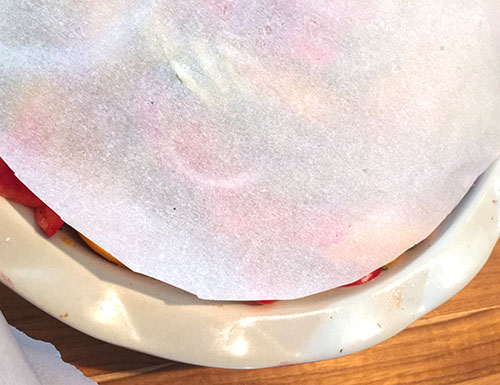
Both celebrate quality:
[I] had kind of written off most animated films of the last couple of decades. With a few exceptions, these annual offerings seem colorful but thin, and computer animation, despite all the advances in technology, is so overt it gives me a headache and pales in scope and depth to the old Disney cartoons from the my own days of yore. “Ratatouille,†with its impeccably rich visual style and detail, respectfully realistic treatment of its subject (apparently the renowned chef Thomas Keller was a consultant for all things kitchen and cooking), and its own theme of sticking to one’s high standards despite all (the potential evil heir to Gusteau’s gastronomic empire contemplates marketing a line of frozen meals to generate more revenue). Remy, the humble rat, will settle at nothing less than the best that can be achieved with whatever ingredients he has at hand (such as pairing a found mushroom with a certain cheese). Each time I watch this film, I reinforce my commitment to maintain high standards. The ratatouille, too, is a celebration of the very best of those late-harvested veggies, selected with care at their peak, to bring the most of the natural flavor that makes this dish succeed.
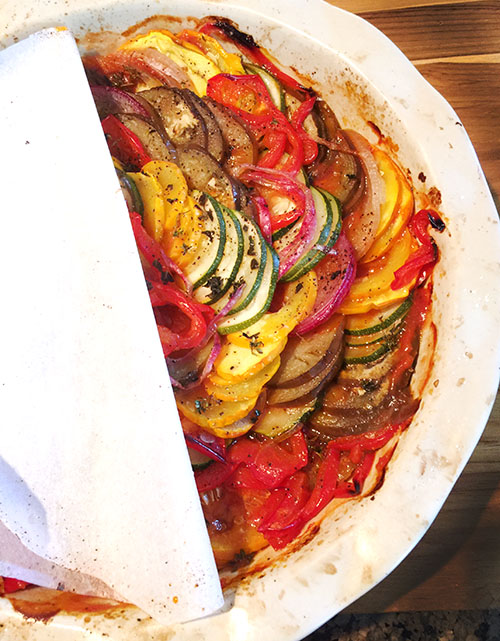
Both give hope:
[Y]oung children watching “Ratatouille†will be enchanted by cute rat antics played out in a very realistic time and place. Older, more perceptive children will plug in to “Ratatouilleâ€â€™s message of inclusiveness and following one’s talents and dreams. But I think “Ratatouille†was one of those animated movies that was really made for (and needed by) adults. Or this adult, anyway. “Ratatouille†has always inspired me and given me hope, and I watch it a few times a year. “Ratatouille†is about so many things, but above all of hem is loving something so much that you transcend yourself and your own circumstances to be an artist in that fold. Or how creating allows for that transcendence, too. Or how it is the art, not the artist, who really matters. The review by Anton Ego (clip here:
https://www.youtube.com/watch?v=KU8JYWAzbbM) is one of the most beautiful statements about art and critics and illuminates on the great Gusteau’s motto “Anyone can cook,†by his own extended analysis: “Not everyone can become a great artist, but a great artist can come from anywhere.â€
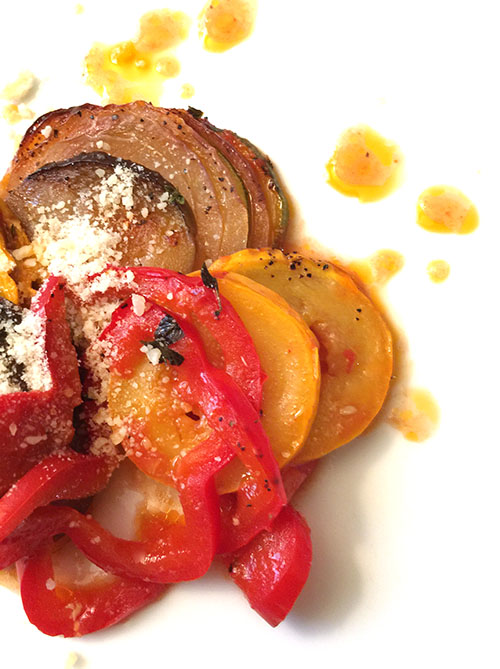
Watching “Ratatouille,†a simple, animated rat movie, one does not expect so much as the furthering of the belief that listening to your passions and not giving up, despite your circumstances, will lead to bliss. This, and so much more make the rewards to watching this film endless (even the closing credits must not be skipped).
[M]aking ratatouille, one does not expect all that much either. As Colette remarks in the film when Remy wants to make ratatouille to impress the restaurant critic, Anton Ego, “Ratatouille? That’s a peasant dish.†To be sure, ratatouille doesn’t seem like much other than baked squash, but that first bite of melt—in-your-mouth zucchini, eggplant, onion and squash with a hint of rich tomato sauce, cooked perfectly (the parchment “lid†keeps just enough steam to make the veggies tender, but not so much that they are mushy or watery), it is a dreamily comforting concoction (as one sees from Anton’s response at first bite). And easy enough to assemble, it gives hope to both the seasoned and novice cook, attempting to create art in the kitchen.
A recipe:
[I] looked high and low for a recipe that resembles the beautiful layers Remy made so impressively (see him make it here) in “Ratatouille.†While a number of ratatouille recipes have the vegetables cut up in stew-like chunks, I found the layered version on allrecipes.com, which I have made a number of times, to really hit the replica mark, both visually and as to what I imagine sent Anton Ego to dreaming.
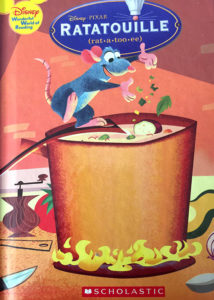
Disney’s Ratatouille
Recipe by Juli Warfel Bitler for www.allrecipes.com
1 (6 ounce) can tomato paste
1/2 onion, chopped
1/4 cup minced garlic
1 tablespoon olive oil
3/4 cup water
Salt and ground black pepper to taste
1 small eggplant, trimmed and very thinly sliced
1 zucchini, trimmed and very thinly sliced
1 yellow squash, trimmed and very thinly sliced
1 red bell pepper, cored and very thinly sliced
1 yellow bell pepper, cored and very thinly sliced
3 tablespoons olive oil, or to taste
1 teaspoon fresh thyme leaves, or to taste
3 tablespoons mascarpone cheese
Preheat the oven to 375 degrees F (190 degrees C).
Spread tomato paste into the bottom of a 10×10-inch baking
dish. Sprinkle with onion and garlic and stir in 1 tablespoon
olive oil and water until thoroughly combined. Season with
salt and black pepper.
Arrange alternating slices of eggplant, zucchini, yellow
squash, red bell pepper, and yellow bell pepper, starting at
the outer edge of the dish and working concentrically
towards the center. Overlap the slices a little to display the
colors. Drizzle the vegetables with 3 tablespoons olive oil
and season with salt and black pepper. Sprinkle with thyme
leaves. Cover vegetables with a piece of parchment paper cut
to fit inside.
Bake in the preheated oven until vegetables are roasted and
tender, about 45 minutes. Serve with dollops of mascarpone
cheese.
